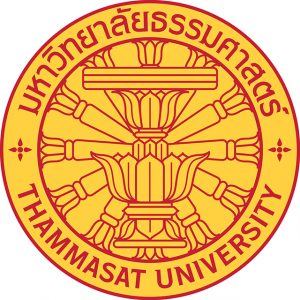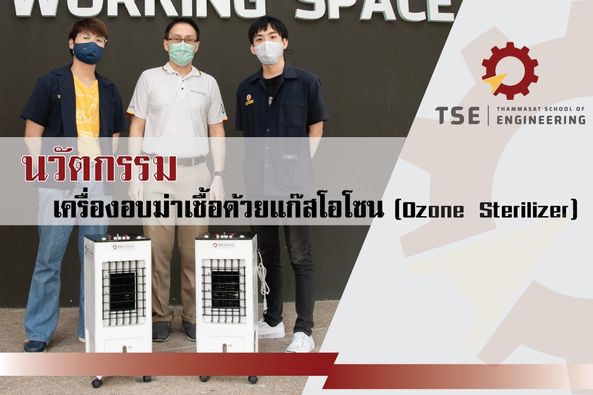Thammasat School of Engineering innovate Ozone sterilizer

Thammasat University
Published on 2 April 2021

“Ozone Sterilizer” has been created by a team of student and professors of Thammasat School of Engineering (TSE). This innovation is another alternative way to prevent the spread of COVID-19. The innovation is a collaborative work of Mr Sorawit Likhitpruekpisan and Mr Itthikorn Prakaisak, who are both 3rd-year students at the Mechanical Engineering Department. Asst.Prof.Dr. Pradya Prempaneerach from Mechanical Engineering Department is the project’s advisor.
Ozone Sterilizer can inactivate Coronavirus 2019 and bacteria by sterilizing these in a sealed room. Ozone gas will be produced from Corona Discharge until it has enough concentration for sterilization.
The sterilizer machine is equipped with a blower fan to circulate the produced Ozone across the sealed room, including hidden spots, such as under the table, small corner, or blind spot.
After ozone sterilization for a specified period of time, the machine will stop autonomically and ozone gas will naturally dissipate in 50-60 minutes at room temperature. However, it is recommended to open the room for air circulation for at least 30 minutes before entering the room safely.
To utilize Ozone Sterilizer, the users have to choose wind speed on the machine which has 3 levels: low, medium, and high, respectively to obtain the desired air strength to be dispersed for each size of the room. After that, turn on the switch next to wind speed to set the countdown timer and the machine will produce ozone. After the countdown timer is on, we then turn on the middle switch button on the machine to start the countdown timer before Ozone Sterilizer starting to produce ozone gas for 50 minutes.
It takes 4-5 months to produce 6 Ozone Sterilizers. The process includes the study from national and international reliable sources. We built 2 versions of Ozone Sterilizers with different fans. We explored the production of ozone gas in different room sizes. We determined the amount of produced ozone gas and the distance that ozone can travel in each location effectively to produce the prototype of 6 Ozone Sterilizers (third version).
According to the study from national and international source and various types of experiment, the average amount of ozone gas used in inactivating the virus is 0.5-1.5 ppm for more than 4 minutes.
From the experiment that Ozone Sterilizer was on for 50 minutes, the average Ozone concentration that can be measured in the sealed classroom was 0.75 - 1.4 ppm depending on the location and size of the classroom. It means that the value was within the standard that can potentially kill the virus. Therefore, the innovation assures us of its effectiveness.
In the future, virus and bacteria inactivation experiment will be conducted in collaboration with the Faculty of Allied Health Sciences, Thammasat University, in order to get more reliable sterilization proof.
There will definitely be further development of this Ozone Sterilizer as it can inactivate the virus and other bacteria accumulated in the classroom. More functions will be added to Ozone Sterilizer such as filtration of small dust particle and bad odour in the air. Moreover, work will be done to add a function that can get rid of Ozone gas after sterilization in order to be to make it possible to use the classroom or meeting room earlier than 60 minutes.
